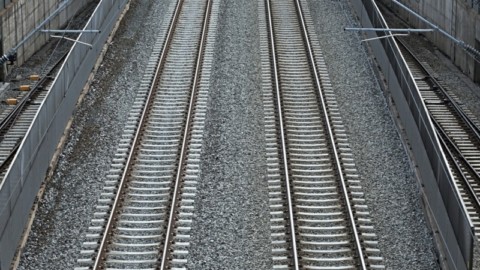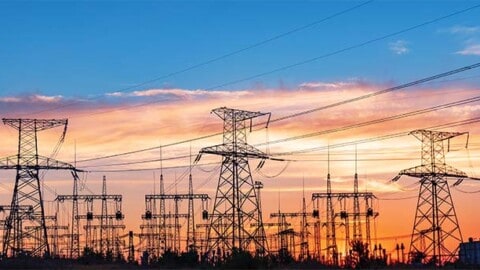The Federal Government has announced a record infrastructure investment in this week’s Federal Budget, with $17.9 billion committed to new and existing infrastructure projects across Australia.
With investments in new and existing infrastructure projects in every state and territory, the Federal Government’s rolling 10-year infrastructure investment pipeline will increase from $110 billion to over $120 billion, a new record that will support around 40,000 jobs.
Key new commitments funded in the 2022–23 Budget include:
- $3.1 billion in new commitments to deliver the $3.6 billion Melbourne Intermodal Terminal Package (VIC), including:
- $1.2 billion for the Beveridge Interstate Freight Terminal in Beveridge, taking the total investment to $1.62 billion
- $280 million for Road Connections, including Camerons Lane Interchange, to the Beveridge Interstate Freight Terminal
- $740 million for the Western Interstate Freight Terminal in Truganina
- $920 million for the Outer Metropolitan Ring – South Rail connection to the Western Interstate Freight Terminal
- $1.6 billion for the Brisbane to the Sunshine Coast (Beerwah-Maroochydore) rail extension (QLD)
- $1.121 billion for the Brisbane to the Gold Coast (Kuraby – Beenleigh) faster rail upgrade (QLD)
- $1 billion for the Sydney to Newcastle – (Tuggerah to Wyong) faster rail upgrade (NSW)
- $678 million for Outback Way (NT, WA, QLD)
- $336 million for the Pacific Highway – Wyong Town Centre (NSW)
- $336 million for the Tasmanian Roads Package – Northern Roads Package – Stage 2 (TAS)
- $200 million for the Marion Road – Anzac Highway to Cross Road (SA)
- $145 million for the Thomas Road – Dual Carriageway – South Western Highway to Tonkin Highway and interchange at Tonkin Highway (WA)
- $140 million for Regional Road Safety upgrades (WA)
- $132 million for Central Australian Tourism Roads (NT)
- $120 million for the Adelaide Hills Productivity and Road Safety Package (SA)
- $46.7 million towards the Athllon Drive Duplication (ACT)
The Budget also includes additional funding for existing projects and Roads of Strategic Importance corridors, including:
- $2.264 billion for the North South Corridor – Torrens to Darlington (SA)
- $352 million for the Milton Ulladulla Bypass (NSW)
- $320 million for the Bunbury Outer Ring Road (Stages 2 and 3) (WA)
- $200 million for the Tonkin Highway Stage 3 Extension (WA)
- $45 million for the Ballarat to Ouyen – Future Priorities (VIC)
- $68.5 million for the Cooktown to Weipa Corridor Upgrade bringing the total Australian Government funding to the corridor to $258.5 million (QLD)
This Budget also includes $7.1 billion for transformative investments in regional Australia including:
- Northern Territory
- North and Central Queensland
- Pilbara
- Hunter
This investment will unlock new economic frontiers of production in agriculture, low emissions manufacturing and renewable energy.
Including its $8.9 billion National Water Grid Fund, the Federal Government will provide a further $7.4 billion to improve Australia’s water security and open up new land for irrigation.
As well as projects in each state and territory, the Federal Government is investing:
- $2.0 billion through the Regional Accelerator Program to drive growth and productivity in regional areas.
- $501.7 million for local councils to deliver priority road and community infrastructure projects across Australia
$2.0 billion in additional funding for the Northern Australia Infrastructure Facility, bringing total funding to $7.0 billion.
Prime Minister, Scott Morrison, said the Federal Government’s record infrastructure investment was keeping Australians moving and supporting thousands of local jobs across the country.
“By investing in these projects we are delivering the infrastructure that the Australian economy needs to grow, to get Australians home sooner and safer, and generate thousands of jobs and new opportunities for small businesses right across the country,” Mr Morrison said.
This infrastructure investment will support tens of thousands of direct and indirect jobs across Australia over the construction life of these projects.
Federal Treasurer, Josh Frydenberg, said infrastructure is a key pillar of Australia’s economic plan to grow the economy and get more Australians into work.
“With the unemployment rate already at an equal 48 year low, the measures in this Budget will create an additional 40,000 jobs across Australia, building on our world leading economic recovery,” Mr Frydenberg said.
“By enhancing transport connectivity, we’re strengthening our supply chains against challenges such as COVID-related disruptions and the impact of natural disasters. This gives businesses and consumers the confidence and certainty they need in uncertain times.”
Regional development plan
The 2022-23 Federal Budget includes a dedicated regions package, which will broaden and strengthen regional Australia’s economy.
The Federal Government will provide $7.1 billion over 11 years from 2022-23 to turbocharge regional economies including four key regional hubs across Australia, with a focus on building next generation export hubs.
Investment will be targeted at strategic infrastructure projects that drive economic and jobs growth in existing and emerging industries. Funding will focus on connecting infrastructure and developing supply chains to ensure long-term economic and national security.
Investments include:
- $2.6 billion for projects in the Northern Territory
- $1.7 billion for projects in North and Central Queensland
- $1.5 billion for projects in the Pilbara region in Western Australia
- $750 million for projects in the Hunter region in New South Wales
This will be complemented by the $2 billion Regional Accelerator Program (RAP), which will provide regions that are primed for growth or that are facing new challenges from structural adjustment with targeted investment opportunities using existing government flagship programs.
To be delivered over the next five years, the RAP recognises that economic growth and transformation extends beyond infrastructure with a focus on further developing regional manufacturing, education, supply chains, export opportunities and defence industry.
Delivering faster and safer rail
The Federal Government is injecting $3.7 billion to deliver three faster rail projects across three key corridors:
- $1.6 billion for the Brisbane to the Sunshine Coast rail extension (Beerwah – Maroochydore)
- $1.1 billion for the Brisbane to the Gold Coast faster rail upgrade (Kuraby – Beenleigh)
- $1.0 billion for the Sydney to Newcastle faster rail upgrade (Tuggerah – Wyong)
Delivering these projects will reduce congestion and improve travel times along these corridors, opening up employment and social opportunities for millions of Australians while supporting economic growth, creating new corridors of commerce and connecting capital cities to major regional centres.
These commitments build on the Federal Government’s 20-year Faster Rail Plan and their existing $2 billion commitment to faster rail between Melbourne and Geelong.
Australiasian Railway Association (ARA) Chief Executive Officer, Caroline Wilkie, said this investment would support the nation’s economic recovery and deliver long term social and environmental benefits.
The ARA welcomed funding for faster rail upgrades as part of the announcement, including $1.121 billion for Brisbane to the Gold Coast (Kuraby to Beenleigh) and $1 billion for Sydney to Newcastle (Tuggerah to Wyong).
Ms Wilkie said the investment in faster rail networks would improve the speed, frequency and reliability of services, as recommended in the ARA’s Faster Rail Report.
“Highways in and out of our cities are only getting busier, which means we must invest in faster rail to support the east coast’s sustainable development,” Ms Wilkie said.
“Faster rail will enable rail travel times on regional rail lines to better compete with road, making it a more desirable and sustainable travel option.
“This will help avoid traffic gridlock and reduce transport-related emissions as populations rise.
“At a time when petrol prices are at record levels, this investment in faster rail will support regional economies and be good news for the many people thinking about a move from the city after the pandemic.”
Road safety and transport investments
The Federal Government will invest $180.1 million to establish the Regional Australia Level Crossing Safety Program, which includes:
- $160.0 million for upgrades to level crossings
- $6.5 million to deliver a national level crossing safety education and awareness campaign
- $5 million to support research into and trials of new level crossing technologies and safety measures
- $2 million for improved data collection and risk assessment for level crossings
Through this new commitment and current initiatives, the government is investing more than $25 billion over the next four years in road safety projects.
Roads Australia (RA) emphasised a need for the Federal Government to lead the development of a fair, nationally consistent road user charging model and implementation framework, which offers greater certainty around the future funding base for road infrastructure.
RA CEO, Michael Kilgariff said, “The investments being made in transport infrastructure through tonight’s Budget will enhance mobility for people and freight, improving efficiency, safety and sustainably of the network by addressing congestion, improving connectivity and boosting service capacity across all modes.
“Those who design, construct, maintain and operate integrated transport infrastructure and services have played a key role in helping Australia emerge from the economic impacts of the COVID-19 pandemic far more quickly than was originally envisaged.”
“Yet, the very strength of that recovery is now imposing significant challenges for our industry, as intense competition for materials and labour within Australia and globally is reflected in rising costs, skills shortages and pressure on project delivery timelines.”
Mr Kilgariff said that to ensure the projects supported in the Budget deliver the desired economic, employment and community benefits, they must be complemented by policy action in other critical areas including procurement, road funding, skilled migration and training and initiatives to support greater diversity in the workforce.
Enhancing freight supply chains
The Federal Government will continue to invest in key freight corridors and infrastructure projects that better connect agricultural and mining regions to ports, airports and other transport hubs, including:
- $880.0 million in additional funding through the Roads of Strategic Importance initiative to improve road safety, enhance productivity and boost the resilience of the freight network, bringing the Federal Government’s total commitment to $5.8 billion since 2018
- $678.0 million to seal another 1,000km of road and deliver further upgrades along Outback Way
- $385.4 million through the Northern Australia Roads Program Extension for upgrades to major freight corridors across the nation’s north
Local jobs and infrastructure
A further $501.7 million has been committed for the Local Roads and Community Infrastructure program, enabling every local council across Australia to deliver priority projects to quickly stimulate local economies. This program has supported an estimated 9,000 jobs and nearly 7,900 individual projects. This brings the total Federal Government commitment to the LRCI Program to $3 billion.
Building on the ongoing commitment to Western Sydney region and to improve connectivity to the Western Sydney International (Nancy-Bird Walton) Airport, the Federal Government is investing up to $77.5 million to develop a Business Case to extend the Sydney Metro – Western Sydney Airport rail line from Bradfield to Glenfield via Leppington. An extension of the rail line will deliver the transport Western Sydney residents need to access jobs and services in the future Bradfield City Centre.
The Federal Government will invest $680.6 million in Queensland through the South East Queensland City Deal. This City Deal will deliver jobs, greater connectivity and more liveable communities throughout the SEQ region.
Work is also progressing on a North West Melbourne City Deal to shape its themes and potential elements with all partners, including how best to leverage the Federal Government’s significant investments in the region.
Energy Asset Funding
The Federal Government will provide up to $215.4 million to support investment in new dispatchable generation and deliver affordable and reliable power for consumers in the nation’s electricity markets. This includes up to $76.9 million to underwrite Portland Aluminium Smelter’s participation in the Reliability and Emergency Reserve Trader mechanism.
The investment also provides $49.3 million for battery and microgrid projects and $24.9 million to assist new gas generators become hydrogen ready, as well as $30 million for early works on Australian Industrial Power’s Port Kembla gas generator project.
The Clean Energy Council said the Federal Budget ‘missed the mark’ in regards to cementing Australia’s place as a global clean energy superpower, and failed to prioritise rapid transition to renewable energy.
Clean Energy Council Chief Executive, Kane Thornton, said, “Significant investment is required in the National Electricity Market and network to make this transition happen safely and smoothly.
“A 21st-century economy needs a modern electricity network that supports reliability, security and low-emissions technologies and delivers low-cost energy to consumers.
“Tonight’s Federal Budget fails to look to the medium-to-long term future through an all-important lens of reducing the emissions that are having a devastating impact on the climate, the environment and on the lives of everyday Australians.”
Mr Thornton said that Australia’s bottom line should be focused on providing a better future for communities through clean, low-cost renewable energy and storage.
Spending through the Australian Renewable Energy Agency and the Clean Energy Finance Corporation, which were set up to increase investment in renewable energy and to support the Federal Government in its commitments to reduce carbon emissions, will decline over the next four years.
“The transport sector accounts for nearly 20 per cent of Australia’s emissions. The Federal Government’s own target is for 30 per cent of all new car sales being electric by 2030, and tonight’s Federal Budget doesn’t get us any closer to that target,” Mr Thornton said.
The Federal Government’s three-month extension of the apprentice wage subsidy ($365 million) will be a small step towards alleviating the skills crisis the clean energy industry is currently facing. More significant is the proposed Australian Apprenticeship Incentive System that is aimed at supporting both employers and employees in priority occupations such as electricians. There is also $550 million in tax relief that electricians can use to upskill into solar rooftop and battery system design and installation.
However, Mr Thornton said that support is lacking for engineers and specialist trades to support new infrastructure. He said the construction of key transmission infrastructure over the next five to ten years relies on those skills, without which there can be no growth, let alone energy transition.
Water infrastructure
Through the Budget, the Federal Government’s additional investment of $6.9 billion through the National Water Grid Fund includes:
- $5.4 billion for Hells Gates Dam, subject to the completion of the final stage of the business case and regulatory approvals
- $600 million for Paradise Dam Improvement
- Up to $433 million for Dungowan Dam and Pipeline, subject to the finalisation of the business case and approval processes
The Federal Government has also locked in $483 million to build Urannah Dam, pending demonstration of value for money and sufficient public benefit for investment.
State by state
South Australia
The Federal Government has committed $2.8 billion to South Australia’s infrastructure pipeline in this week’s Federal Budget.
Key new projects funded in South Australia in the 2022–23 Budget include:
- $200 million for the Marion Road – Anzac Highway to Cross Road
- $120 million for the Adelaide Hills Productivity and Road Safety Package
- $60 million for the South East Freeway Managed Motorways – Stage 2
- $60 million for the Targeted Investments to Improve National Supply Chain Resilience
- $16 million for the Main South Road Productivity Package
The Budget also includes:
- $2.264 billion in additional funding for the North South Corridor – Torrens to Darlington
- $40 million in additional funding for Horrocks Highway Corridor
- $20 million in additional funding for the Marion Road and Sir Donald Bradman Drive Intersection Upgrade
This brings the Federal Government’s total infrastructure investment in South Australia since 2013 to more than $13.7 billion across 95 road and rail infrastructure projects, with 39 projects having been completed in the period.
Federal Government-funded transport infrastructure projects which are currently under construction in South Australia are expected to support around 3,000 jobs over the life of the projects.
Victoria: $3.1 billion funding for VIC Intermodal Terminals
The Federal Government has committed $3.1 billion to Port Melbourne in the Federal Budget, to deliver the $3.6 billion Melbourne Intermodal Terminal Package and accommodate future Inland Rail services.
These terminals will help remove around 5,500 truck movements per day from metropolitan arterial roads in Melbourne, reducing congestion and emissions across the CBD, and improving safety. These investments will improve supply chain productivity and reliability while unlocking freight efficiencies across the broader national network, including the Inland Rail.
Additional investments to bolster the construction of Inland Rail include:
- An additional $300.0 million through the Grade Separating Interfaces Program to fund new grade separations in New South Wales along the Inland Rail route
- $150.0 million to fund the construction of complementary infrastructure projects that will unlock the benefits of Inland Rail for regional economies.
Port of Melbourne said both the Western and Beveridge freight terminals are critical to support economic growth and livability by moving more freight on rail.
With 37 per cent of containers imported through the Port destined for the outer western suburbs, the Port supports the Western Intermodal Freight Terminal (WIFT) as the immediate priority.
WIFT provides the most effective consolidation point for the majority of the Port’s international import and export containers that are located to the west and north of Melbourne, as the Port’s 2020 Container Logistics Chain Study found.
Port of Melbourne CEO, Saul Cannon, said, “The port has always acknowledged the long term need for two Intermodal terminals in the Melbourne metropolitan, however we believe the immediate priority should be WIFT. WIFT creates the most opportunity to shift more freight onto rail in the short to medium term.”
The Australian Logistics Council (ALC) has also welcomed the additional budget commitment for the Melbourne Intermodal Terminal Package.
In a pre-budget submission, the ALC called for a national approach to planning and developing Australia’s freight and logistics infrastructure, with a strategic focus on the future freight requirements and intermodal systems.
ALC said they support the increasing focus on the important role intermodals play in the movement of freight, to achieve end to end supply chain efficiency, improve sustainability and ease road congestion.
Northern Territory
The Federal Government will invest $2.6 billion in infrastructure projects across the Northern Territory, transforming it into an industrial hub for next generation exports.
- $1.5 billion to build new port infrastructure, such as a wharf, an offloading facility and dredging of the shipping channel, to boost the region’s importing and exporting ability
- $440 million to build new logistics hubs at Alice Springs, Katherine and Tennant Creek to facilitate more export activity out of the Northern Territory
- $300 million to support low emissions LNG and clean hydrogen production at Darwin, together with associated carbon capture and storage infrastructure
- $200 million to further develop the Middle Arm Sustainable Development Precinct, delivering enabling infrastructure such as a rail spur and a new road network to strengthen supply chains
- $110 million in additional funding to continue to upgrade and further seal the Tanami Road, better connecting mining, resources, tourism, and agribusinesses between the Northern Territory and Western Australia
North and Central Queensland
The Federal Government will invest $1.7 billion in large-scale infrastructure to help North and Central Queensland become a major global supplier of food and fibre.
- $483 million towards the future construction of Urannah Dam, pending demonstration of value for money and sufficient public benefit for investment, to unlock more irrigated agriculture and providing water security
- $400 million to further upgrade the Inland Freight Route, better connecting regional mining and agriculutral businesses with domestic and international markets
- $80 million towards the future construction of the Bowen Pipeline, subject to completion of the detailed business case, confirmation of total delivery costs and co-funding, and demonstration of value for money and public benefit
- $12.5 million towards a package of groundwater improvements in the Lower Burdekin
- $11.5 million towards a package of strategic planning work to help determine the optimal mix of water infrastructure investment in the Burdekin and Central Queensland
- $8.0 million in additional funding to support construction of the Big Rocks Weir
- $7.7 million to construct new common-user infrastructure at the Port of Bundaberg as part of the Hinkler Regional Deal, building on the Government’s existing $10 million commitment to this project
Pilbara region
The Federal Government will invest $1.5 billion to support new industries in the north-west, establishing the Pilbara region as a major hub for exports.
- $400 million in additional funding to completely seal the Tanami Road to the Western Australian border, improving safety, accessibility and flood resilience to better support communities and industries along the route
- $285 million to deliver infrastructure upgrades at the Port of Dampier, building its capacity to support next generation export industries
- $280 million to construct additional infrastructure at Lumsden Point to better faciliate imports
- $200 million to increase onshore processing and value-add of iron ore exports, to support low emissions steel production in Indo-Pacific customer countries like Japan and Korea
- $200 million to enhance Australia’s supply chain security through new low emissions manufacturing facilities (using hydrogen and hydrogen-derivatives like ammonia, as well as carbon capture utilisation and storage) in the Pilbara region.
- $100 million to de-risk private sector investment in firm generation and grid infrastructure to increase system strength and capacity in the Pilbara region
Hunter region
The Federal Government will invest $750 million to support the Hunter’s expansion into new export industries while continuing to support traditional industries, strengthening the local economy and its position as a leading exporter to the world.
- $268.8 million to build the New England Highway Bypass to Muswellbrook, better connecting regional industries and helping them get their products to port
- $100 million to support pre-Final Investment Decision activities and early works to make the Port of Newcastle ‘hydrogen ready’
Across these regions, the Federal Government will work with jurisdictions and industry to prioritise and deliver these commitments. Funding is conditional pending completed business cases demonstrating value for money and sufficient public benefit for investment, options for co-funding, and consideration of interaction with other relevant processes and initiatives across governments.
Industry welcomes investment
Australian Constructors Association (ACA) CEO, Jon Davies, welcomes the record $120 billion infrastructure investment.
Mr Davies said it is incumbent on government and industry to ensure taxpayer money is well spent, and hit the accelerator on industry reform.
“The construction industry has barely changed in 30 years and reforms aimed at improving productivity and innovation could slash billions off the cost of constructing the planned infrastructure pipeline and in the process help repair the budget bottom line,” Mr Davies said.
The ACA said they are calling on the Federal Government to coordinate and incentivise reforms to state procurement and delivery processes in order to realise this opportunity.
Budget documents are available on the Federal Budget website.

















